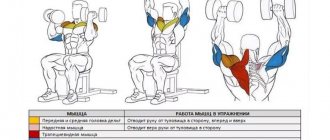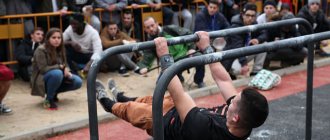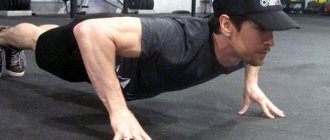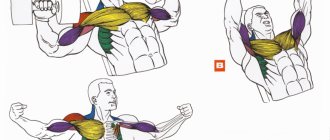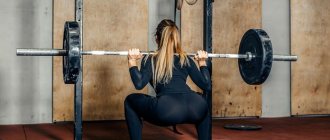Famous British criminal Charles Salvador (better known as Charles Bronson
) has been serving his sentence since 1974.
During his decades in prison, Bronson became a fitness fanatic. He created a training program that uses only body weight and a few foreign objects.
Extreme Mode has given him near-superhuman strength: He says he can do 172 push-ups in 60 seconds, lift a pool table single-handedly and bend the door of a steel prison cell with his bare hands. He recorded a large number of training videos from prison, and also set a record for push-ups per hour: 1,727.
Bronson is not the only prisoner who has been able to develop impressive strength without access to a gym, nutritious food or nutritional supplements.
Prisoners around the world have developed highly effective exercises that they can perform in a small cell or in a prison yard. For strong men who end up in prison, it's not just about aesthetics and personal development - sport acts as a deterrent to attack and is necessary for survival.
Benefits of warming up using only your body weight
You can do them anywhere. Don't have time to go to the gym? Do you travel a lot? Arrested for 5-10 years? You can do this workout anywhere: bedroom, office, suite or solitary confinement.
It's free. Don't have money for a gym membership or to buy your own equipment? This is not a reason not to exercise. With a few simple exercises, you can train all muscle groups for free.
Strength + cardio exercises in one workout. By increasing the tempo and decreasing the rest between sets and exercises, you can increase the intensity of your workout. This workout will only take 30 minutes.
Basic concept
In his book, Paul Waed gives many reasons to train with your bodyweight. Here are some of them:
- Strength develops in parallel with endurance;
- The muscles become no less prominent and beautiful than when exercising with weights;
- Less risk of damaging muscles and joints;
- Natural and time-tested exercises;
- Minimum required equipment;
- The ability to use acquired skills in battle;
- Strengthening joints and ligaments;
- Improving metabolism and reducing body fat;
Paul Uyed is based on ancient rhythmic gymnastics and training. This direction was developed in ancient times, starting with the training of the Spartans. To develop the strength of a blow in battle and the beauty of the body, exercises with one’s own weight were used according to a certain scheme. Cyclic repetitions and constant stretching of the involved muscles were actively used. The processes of simple development and development took place harmoniously in them, and the muscles “clogged” less, were actively fed by the vessels and could be used at any time. In exercises with heavy weights, such a system is less effective, so bodybuilders are actually not suitable anywhere except for demonstration performances in the gym.
Paul explains the decreasing popularity of this trend due to the commercial interest of fitness centers and manufacturers of expensive equipment. Against this background, gymnastics became something simple and uncomplicated, so it was quickly supplanted into the rank of morning exercises with a small number of repetitions to create tone. And expensive exercise equipment and fitness paraphernalia have become the main symbol of sports among people. However, Paul Wade has proven his effectiveness: you just have to look at the photographs of the man in his youth and after prison. From a thin, lanky guy, he turned into a muscular, powerful man with defined muscles. In his training, he did not use any weights, biological supplements or hormones to increase muscle mass. Paul Wade actively trained prisoners and himself won competitions among prisoners in powerlifting and for several years in a row won the championship in pull-ups and push-ups among prisoners of Angola. The main focus of his training is on the back and hips. Paul Wade's training program is built on the principles of cyclicality and physiology.
Charles Bronson exercises
Circuit training outdoors! 8 basic exercises from Charles Bronson!
There are 6 basic exercises that involve the entire body. However, by slightly modifying each exercise, you can create over 50 different exercises from the 6 basic ones. If you were locked up for life, I'm sure you could come up with 50 more variations.
Push ups
According to a book he wrote in prison, Bronson does 2,000 push-ups a day. If you start doing 10 push-ups a day, and add 5 every day, you can reach this level in just over a year.
Push-up variations
Push-ups work several muscle groups, including the chest muscles, anterior deltoids, and triceps. Physical exercises can easily be modified to increase difficulty and work different muscle groups.
Narrow / Wide hand position
You can engage different muscle groups simply by adjusting the placement of your hands. A narrow arm position works the triceps, while a wider arm position develops the chest muscles.
Indian push-up
This is a dynamic full-body movement that develops strength and flexibility in the chest, shoulders, back, hips and triceps.
Get into a standing position with your feet slightly wider than shoulder-width apart. Bend over and place your hands on the floor, keeping your arms and legs straight. You should look like an inverted "V". Your buttocks are at the top of the "V" and your head is pointing towards the ground.
To perform an Indian push-up, you need to make a sort of hovering motion. Move your head down and forward, bending your elbows. As your head approaches the ground, continue moving your torso forward, arching your back and lowering your hips. Your hips will now be next to your hands. Make sure your back is well stretched. Return to starting position and repeat.
One-arm push-up
You'll reach "beast mode" status when you can do one-armed push-ups.
Pull-ups
The pull-up is a highly effective exercise that works a number of muscle groups, including the latissimus muscle (the “wing” muscle on the back), biceps, pectoral muscles and forearms.
What's even better is that they can be made anywhere you can hang them. What to do if you are in a hotel? You can do pull-ups on the door frame if it's wide enough, although it will be more like doing finger pull-ups.
Pull-up options
Just like the push-up, the pull-up can be modified to target different muscle groups or make the exercise more challenging.
Keep your head up
Move your hand to a chin-up position and your biceps will work harder and your lats will work differently.
Cross arm pull-up
One hand grips the horizontal bar over the other hand.
Pulling up the saboteur
Grab the horizontal bar with your hands from different sides. raise your head on one side of the bar for one repetition, and then on the other side of the bar.
Narrow / Wide handle
You can vary your grip width to target different muscle groups. Try doing pull-ups with your hands very close or as far apart as you can.
Pull-ups on a towel
Hang two towels on the horizontal bar and grab one in each hand. Pull yourself up. Great for developing grip strength.
One-handed pull-up
You'll reach beast mode status when you can do multiple one-armed pull-ups.
Squats
The squat is one of the most basic yet effective athletic movements. In one exercise you work your quads, glutes, hips and inner thighs.
Squat Variations
Prisoner Squats
These squats are performed with your hands behind your head.
Add weight
If you don't have access to a barbell, you can find objects to place on your shoulders or hold in front of your chest. Just squat with the appropriate weight.
Jump squats
Perform the squat as usual, but when you reach the bottom, jump up as high as you can. When your feet hit the ground, immediately dive into the next squat and jump again.
Pistol Squat
This is a full squat on one leg. The leg that is not squatting is straightened forward during the exercise. When you're at the bottom of a squat, you look like a pistol, hence the name. It may take you several months to do this.
There are entire routines that will help you perform this herculean feat, but there is one exercise that will help you move directly to pistol squats.
Simply place a pole or some other strong object in front of you and squat on one leg. Use the pole to pull yourself up. Eventually, you will be able to do this squat without any aids.
Dives
During diving, the triceps, pectoral muscles, shoulders, and forearms work. Prisoners simply place their hands on a chair and their feet on the floor or bed.
Hanging Leg Raise
Not only does it work your abs, obliques, and rib muscles, but it also works your quads, hamstrings, forearms, and shoulder muscles.
Hanging Leg Raise Variations
Straight leg raises
Raise your legs straight, bending your hips until they are fully flexed and your knees are significantly higher than your hips.
Leg raises with bent knees
If you can't do straight leg raises, you can modify them by bending your knees and lifting them toward your chest.
Full straight leg raise
Do the straight leg raise as usual, but instead of stopping when your legs rise above your hips, continue the exercise until your toes touch the bar.
Straight leg raise with towel
Hang two towels over the bar and hold one in each hand. Perform straight leg raises while holding towels.
"Wiper"
Perform a straight leg raise, and when your legs are in the top position, tighten your abs and turn your legs to one side. Turn the other way. This is one exercise.
One-arm straight leg raise
You have achieved "beast mode" status if you can perform several one-armed straight leg raises and hold the top position for several seconds.
Burpee
Burpees are a full body exercise. This simple movement tests both your strength and aerobic capacity.
Burpee Variations
To perform a basic Burpee, follow these instructions:
- Start in a squat position with your hands on the floor in front of you.
- Move your legs back into a push-up position.
- Immediately return your legs to the squat.
- Jump up as high as possible from a squat position.
Burpee with push-ups
Do a regular burpee, but after your legs are in the push-up position, go ahead and do a full push-up.
Burpee with Indian push-up
Instead of a simple push-up, do an Indian push-up.
Burpee + pull-up
Stand under the horizontal bar so that you can jump to it. Do a regular burpee, but as you jump up, grab the bar and do a pull-up. Repeat. Did you hear that? It was the sound of your dying soul.
What kind of personality is this?
Charles Bronson, born Michael Peterson, became famous as Britain's most violent prisoner. He, like no one else, knows everything about spending time in a confined space. He was first sentenced to seven years in prison for armed robbery in 1974. Due to the brutal attack on other prisoners and guards, this sentence was extended.
This was followed by a short period of freedom, which ended three weeks later. Bronson was convicted of planning another armed robbery, and was sentenced to life in prison in 1999. This happened after he held a prison teacher hostage for almost two days, who did not like Bronson's drawings.
Bronson, 67, is not only known as a brutal and controversial convict who spent more time in solitary confinement than anyone else. He especially stood out among his other “colleagues” for his size and strength, which acquired almost mythical fame, immortalized by the man himself.
I am the king of push-ups and squats. I already mentioned that I once did 25 push-ups while holding two men behind my back.
He wrote in his autobiography back in 2000.
I've been taking notes on training in prison for as long as I can remember. Imagine any man in my age group lifting a life-size pool table. I can. Show me one more guy who can do 1,727 push-ups in an hour. I can.
What is all this information for? It’s just that a person who spent almost his entire life in a steel box measuring 3.5 * 2.5 square meters turns out to be stronger and healthier than anyone who is free.
Luckily for you, Charlie doesn't mind sharing his secrets. Back in 2002, Bronson released a book called Fitness in Solitary Confinement . In it, he talks about exercises, weight, and training regime in prison. Check out the best tips and exercises that are perfect for self-isolation.
Deck of Pain
This is supposedly a favorite workout among prisoners, as they usually have a deck of cards at hand.
Take a standard 52 card deck. Assign one of the exercises (or one of the variations) to each of the four suits. So you'll end up with something like:
- Clubs: Push-ups
- Peaks: Pull-ups
- Diamonds: Squats
- Worms: Hanging Leg Raises.
Start pulling out cards. The suit tells you which exercise to do, and the number indicates the number of repetitions.
Finish with ten burpees to get you in a good mood.
Wade program
The training is built on the principle of increasing the complexity of the task. In total, there are several blocks of exercises for different muscle groups, built on different mechanical principles. This includes:
- Push-ups;
- Squat;
- Raising the lower body;
- Execution of the bridge;
- Pull-up;
- Handstand push-ups.
Each block includes ten exercises of varying difficulty levels. Each of them needs to be honed to perfection and only then move on to the next. Exercises should be done as slowly as possible, with effort and monitor your breathing. When the muscles are loaded, exhale, and when relaxing, inhale. You need to coordinate breathing and muscle work, and also take short breaks between blocks, which can be used to stretch the muscles. The number of repetitions of each exercise increases sequentially from ten to fifty or more.
Juarez Valley Method
Inmates at the Juarez Valley prison in Mexico, one of the most dangerous prisons in the world, use the following training regimen.
Choose an exercise. You only need to do one thing according to the scheme. Let's say, for example, you can do push-ups.
The repetition scheme looks like this:
- Set 1: 20 reps
- Set 2: 1 rep
- Set 3: 19 reps
- Set 4: 2 reps
- Set 5: 18 reps
- Set 6: 3 reps
- Set 7: 17 reps
- Set 8: 4 reps
- Set 9: 16 reps
- Set 10: 5 reps
- Set 11: 15 reps
- Set 12: 6 reps
- Set 13: 14 reps
- Set 14: 7 reps
- Set 15: 13 reps
- Set 16: 8 reps
- Set 17: 12 reps
- Set 18: 9 reps
- Set 19: 11 reps
- Set 20: 10 reps.
According to this scheme, you need to do 210 repetitions.
Before each approach, take 5-10 steps to rest. Goal: Complete this circuit as quickly as you can.
Example-push-ups
This block of exercises in the workout comes first in Paul’s book for a reason. Push-ups are best for developing muscle mass and endurance. It is correct to do these exercises classically, that is, from the floor, and not from the bench, which has become so popular among athletes. Wade does not give clear technical rules, but only points out the basic principles of this block:
- Avoid unphysiological body positions and sharp pain;
- Keep your body straight;
- Keep your legs together;
- Maintain an even rhythm of breathing;
- At the height of the load, the arms should be straight, and when lowered, soft.
The speed of doing push-ups can be different: fast exercises improve innervation and blood supply to the muscles. But to start training, the author recommends mastering a slow rhythm: lower for two seconds, pause for one second and rise for two seconds.
To achieve the correct hand position, the trainer here advises starting with a full palm on the floor. Finger push-ups will strengthen your forearm muscles, but are not suitable for beginners. But you should completely forget about push-ups on your hands; it does not provide any benefit, but contributes to injury. When lowering the body, you need to choose the optimal point where you can stop: additional projectiles (a ball or a stack of bricks) are suitable here, which will allow you to vary with this depth. At the moment of maximum immersion, you need to freeze and lightly touch the floor or object, which Paul called “kissing a child” in terms of sensations and pressure. The master's advice is not to try to press your chest or stomach onto the floor. Sports activities are aimed at rapid growth of muscle mass with proper organization of work.
Driving along the ditch
Instead of doing the maximum number of repetitions in a given period of time, you can move along a groove, completing a certain number of repetitions throughout the day. You can do 10 push-ups every half hour. So in 12 hours a day you will perform 240 push-ups.
I'm moving through the groove with pull-ups. I have a pull-up bar hanging in the doorway of my closet. Anytime I walk past him and do 5 pull-ups. The amount of reps I'm able to accumulate throughout the day always surprises me.
Philosophy
The life of prisoners was distinguished by a strict routine, according to the author, and irreconcilable rules of life within the collective. Paul considers willpower and discipline to be the basis of his approach to his training.
Many athletes behind bars made their own schedule in order to have some kind of personal space and self-control in the zone. After liberation, this system was reinforced by people in the wild for better adaptation. In sports for the average person, the basis of training is regularity of exercise and strict self-control. You need to exercise constantly and at the same time, gradually increasing the load. A trainer against the usual fitness accessories and the general atmosphere of modern sports in the spirit of a consumer society, this trend in training creates the wrong idea about exercise and what is required for it. Achieving harmony with one’s own body, according to Wade, is based on personal aspiration and one’s own strengths; nothing else is required for this. The training area can be a corner of the apartment or a place near the horizontal bar on the street. An athlete's nutrition is not the primary focus for achieving muscle mass.
Diet in prison
Prisoners in different countries are offered different rations, usually corresponding to the national food culture.
In the vastness of the CIS countries, food for offenders is usually quite simple and without any frills. For breakfast, prisoners receive oatmeal or pearl barley porridge with water. Lunch consists of soup (the so-called gruel), porridge interspersed with meat and compote or tea. An evening meal usually involves porridge with fish. Each meal also includes a ration of bread, but usually bread is made from the cheapest flour, so this product has practically no taste. In other countries, the food of prisoners is also not very varied, but an important difference from our prison menu is the presence of a large amount of meat and vegetables in the diet. In Asia, prisons offer fish, rice, and vegetable salads—a set of foods traditional for the region. In Western European countries, prisoners are fed beef or chicken, beans and salads. The food for prisoners in the United States is also not much different, for example, lunch in Philadelphia prisons consists of mashed potatoes with gravy and two small pieces of beef.
If you have money and connections in any prison in the world, you can eat much better, ordering possible delicacies, including even restaurant food. Typically, products are purchased through the prison store or ordered through relatives and friends.
It is obvious that ordinary prisoners in prisons cannot maintain a normal sports nutrition regimen - this is due to a lack of protein and vitamins, which are necessary for building muscles. Prison food mainly consists of carbohydrate foods, which provide the necessary energy supply.


